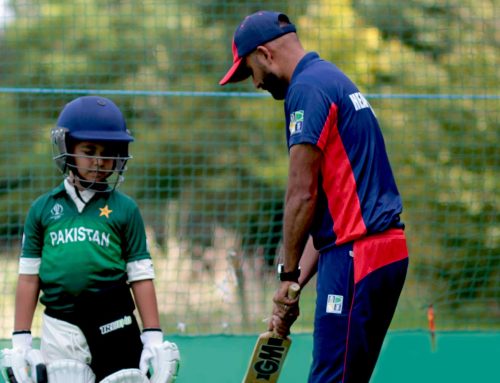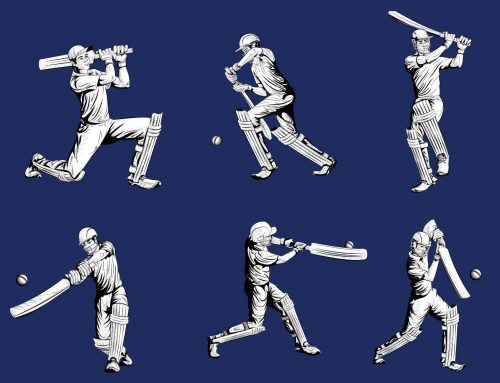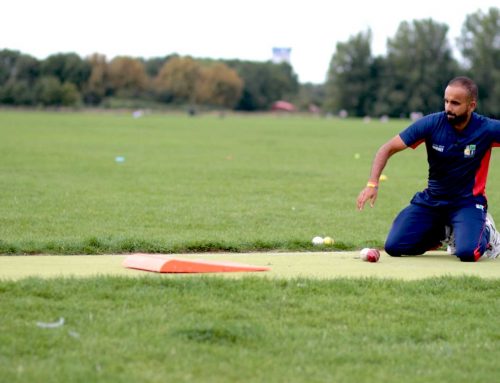
The Basics of Indoor Cricket and what makes it thrilling!
When one thinks of cricket, immediately the picture that comes to the mind is sunny outdoors, freshly mown grass, and a vast pitch. Therefore, for most of us, the thought of playing cricket indoors seems abnormal because traditionally that is not where cricket is played.
We are not sure about the exact origins of indoor cricket but it seems to have been popularized in Australia and was supposedly a solution to allow players to have a chance to play when the weather did not allow outdoor activities. It is a well-known fact that indoor sport can be played all year long, immune to the storms outside; however, we would like to educate you about the advantages of indoor cricket. Although the basics of playing cricket – whether inside or outside – are pretty much the same, there are a few exceptions. In this blog post, we shed light on how exciting the indoor variation can be and what makes it fun.
1. Energetic and fast-paced
The number one feature of indoor cricket that makes it different from its traditional counterpart is that it is fast paced. The game comprises two innings, with each inning lasting 16 overs; each team has 8 overs. Every player bowls 2 overs, whereas every player bats for 4 overs but in a partnership. The game lasts only 90 minutes. If you want the game to be shorter, the number of players can be reduced to 6 on each team. If the players are limited to 6, the usual rule is to limit the overs to 6 balls as well.
2. Big-hitting not required
Since indoor cricket takes place in a compact space, hitting big does not work. Instead, you have to master the art of the bump shot. For those who are not aware of what bump shot is, it is the shot that bounces over the head of close fielders affording them adequate time to make their ground. One will observe that everything is placed close enough to be intensely involving in indoor cricket. There is a wicket or score on every ball that makes the game extremely fast and furious.
3. Batsmen Dismissal Rule
One major difference between outdoor and indoor cricket is that the batsmen continue to bat even after they are dismissed. However, each dismissal leads to a deduction of 5 runs from the specific team.
4. Scoring rules
If a ball strikes the boundary wall behind the bowler but does not touch any part of floor or roof, the batsman scores six runs. If the ball touches just the floor, the player earn four runs. In case the call strikes side walls, one run is awarded on each strike. If a batsman has made a total of 25 runs, he has to retire and can only return if the rest of the team is dismissed before 10 overs are completed.
5. Fielding is a standout part of Indoor Cricket
The playing area’s tight confines mean that fielders have to be on their toes during the match. The players in this position must have sharp reflexes and have the ability to flick the ball away from the stumps.
Both children and adults can play the game, and with no weather restrictions, the sport can be enjoyed anytime! Indoor cricket usually employs a softball, so even players with no cricket experience will have fun playing.
Indoor cricket was commonly played in the UK back in the 80s and 90s. However, rising rents and unavailability of playing spaces caused a dip in popularity. The interest in indoor cricket is on the rise again, especially given the fact that the game does not require full equipment, which makes the game even more appealing to non-cricketers and beginners. Also, the game can be adapted in several ways which is part of its appeal.
Although COVID has cast a shadow on all indoor activities in the country, we saw schools playing cricket inside before the pandemic. As a cricket-loving nation that experiences rain more often, indoor cricket has a huge potential! Besides keeping the players fit all year long, it is a fantastic way to develop amateur participants’ skills. Indeed, some of the best-known cricketers from Australia, such as Brad Haddin and Steve Waugh came to the industry’s forefront through indoor cricket. At home, rising North Middlesex star Luke Hallman is one of the handful of professional players trying to bridge the gap between indoor and outdoor cricket.
Everybody in this format of cricket gets a chance to bat and bowl. What is more, even the keeper having two overs, making the game super competitive. The only disadvantage is that indoor cricket requires a specific area and netting; however, ECB is actively trying to work on these issues so that indoor cricket can thrive. With the launch of the first indoor urban cricket center in Leyton, last summer, here is hoping more players get to play this inclusive and adrenaline inducing game.





